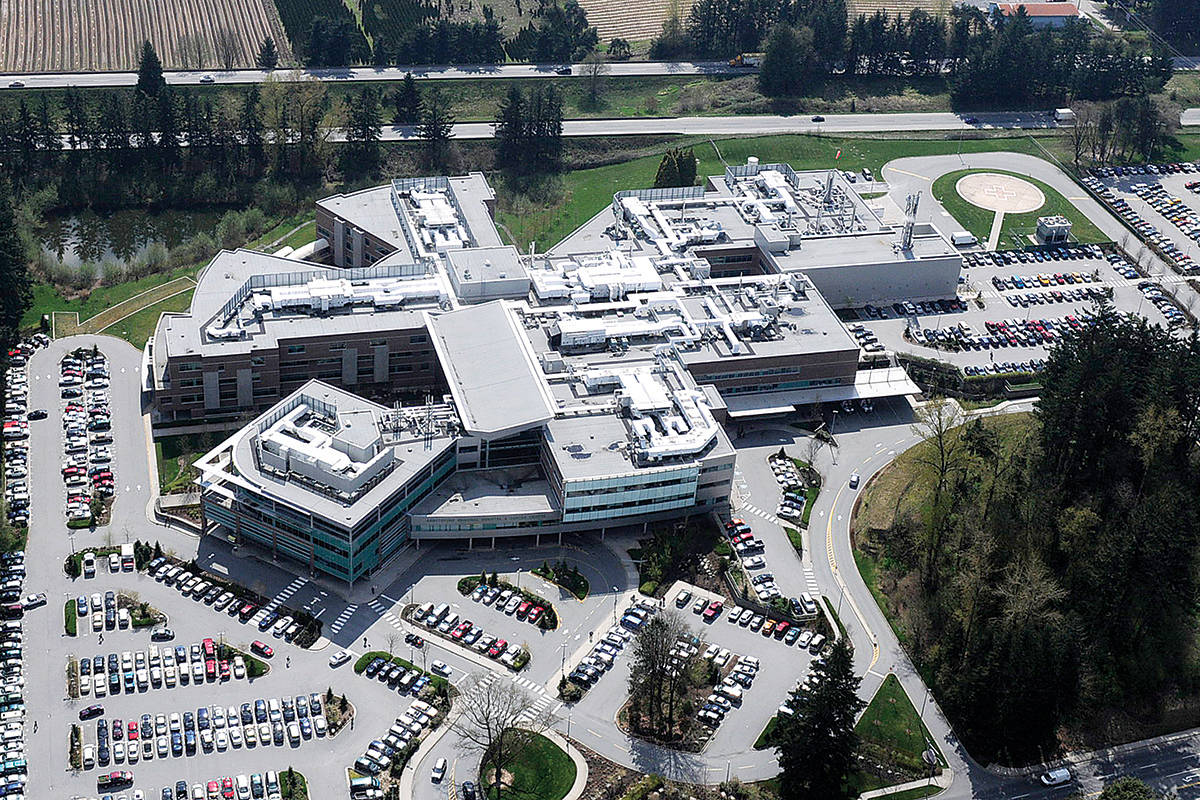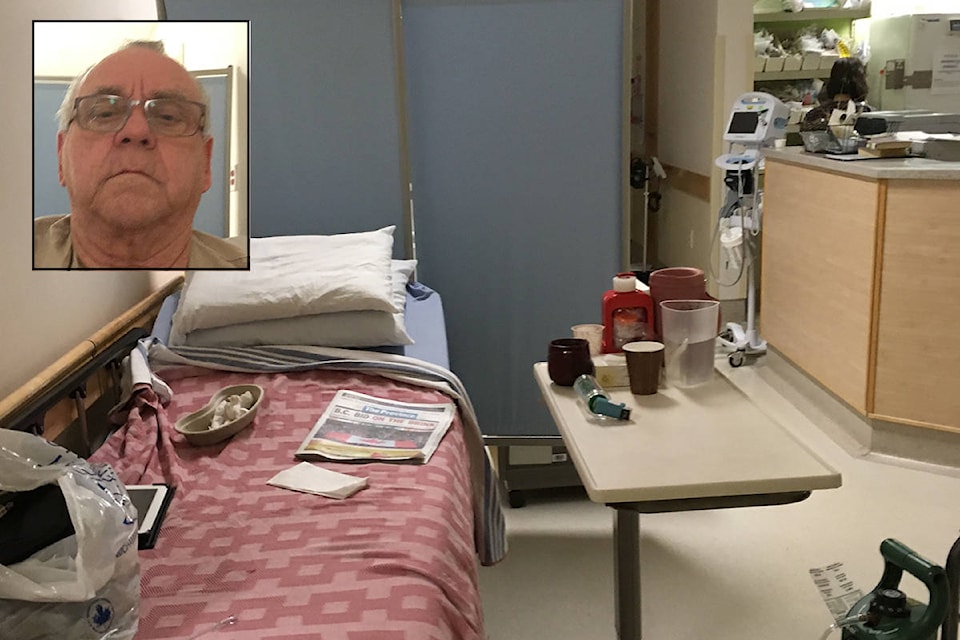Fraser Health officials are optimistic that congestion in the region’s hospitals can eventually be alleviated, but one senior’s experience at Abbotsford Regional Hospital (ARH) this week suggests patients continue to pay the price in the meantime.
Jack McKay, who suffers from COPD (chronic obstructive pulmonary disease), was brought to ARH in an ambulance last Friday after having trouble breathing.
Upon admittance, McKay, 74, was placed in a bed in an area right next to a nurses’ station. Over the next several days, he watched patients come and go from surrounding rooms, but McKay was left in the area next to the nurses’ station, which had no privacy and where he said he couldn’t sleep due to the nearby lights and the bustle in the area.
“There’s absolutely no rest,” he said Thursday from his bed in ARH. “The lights are on all night long. There’s nothing but noise all night.”
McKay, who said he had slept for around five total hours since being admitted, was hoping to be sent home later Thursday.
On Wednesday night, McKay was moved into a nearby hallway that he says is even worse. He says his condition has been aggravated by the lack of rest.
“You go seven days without sleep and see how you feel,” he said. “I haven’t slept, and the stress has raised my blood pressure and all kinds of crap.”
McKay doesn’t blame the staff, though.
“The nurses are good. I can’t knock what the nurses do. They do what they can with the best of what they’ve got.”
Having watched others be admitted to rooms, McKay suspected other patients were paying money for a private or semi-private room.
“It’s just an overbooked joint. I feel if you’re buying a room, you’re getting a room,” he said. “If you’re a regular taxpayer, you don’t get s—.”
That isn’t the case, though, according to Fraser Health.
Spokesperson Tasleem Juma said rooms are assigned based on a patient’s need, and those wanting to pay for a room do not displace those who cannot. She said those in hallways are often deemed to require lower levels of care.
Juma said that while the health authority can’t comment on the specifics of McKay’s case, officials are “very sorry” about his experience and will try to learn from the case.
Juma said congestion has decreased at facilities across the region, but that Abbotsford continues to experience “some challenges.” The hospital currently has seen eight per cent more admitted patients this month than during the same period last year and that during such high-volume periods, all available spaces are used.
“Patients will still receive high-quality care,” she said.
Abbotsford Regional Hospital has been trying for years to reduce hospital congestion, often without any success.
In an interview with The News last week, before McKay was admitted to hospital, Fraser Health CEO Michael Marchbank expressed hope that lessons learned recently in other hospitals could be applied to facilities like ARH.
Marchbank pointed to hospitals in Burnaby and Port Moody that have improved at finding beds for newly admitted patients.
“I think we are seeing slow progress, but it’s not where we need to be,” Marchbank told The News. He said congestion is a long-term challenge for health care systems, but added, “We actually are proving it can be done. If you look at congestion at Eagle Ridge Hospital, it’s remarkably good.”
The Fraser Health strategy has long focused on moving patients out of hospital to be cared for either at home or residential facilities, where treatment can be both more comfortable and cheaper. Jim Sinclair – who was appointed the new chair of Fraser Health after the NDP took power last year – said he and his fellow new appointees (there are also several holdovers from the previous board) aren’t looking to revolutionize the way Fraser Health delivers care.
“Where we really want people to end up is in their homes, in their communities, getting the care they need,” Sinclair told The News last week. “Frankly, that care is better there than in acute care.”
That view is in line with Fraser Health’s direction prior to his arrival. Sinclair said the health authority will continue working to provide more home care, community clinics, residential care and other non-hospital health services, although those, too, can be improved.
@ty_olsen
tolsen@abbynews.com
Like us on Facebook and follow us on Twitter.

